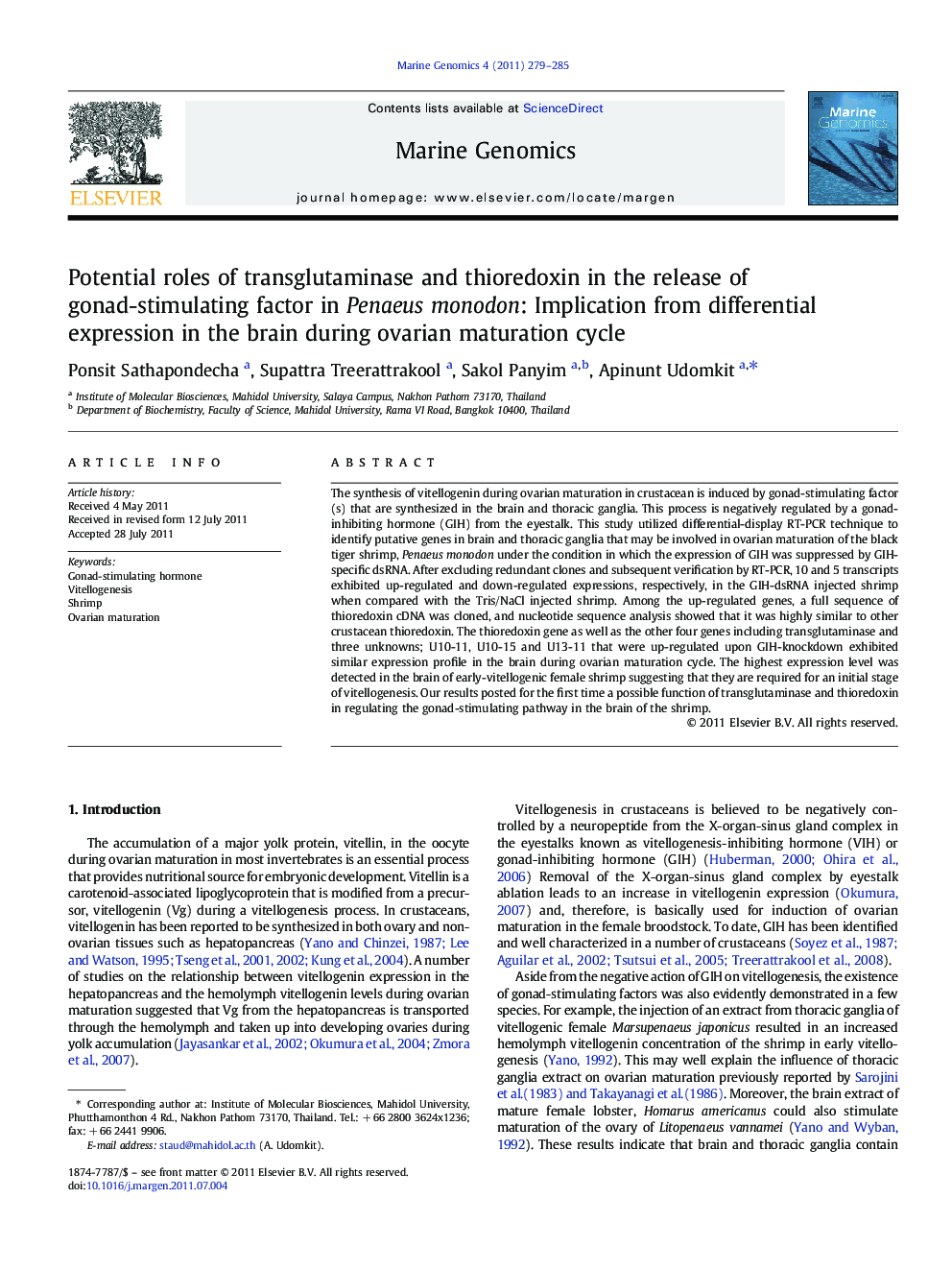| Article ID | Journal | Published Year | Pages | File Type |
|---|---|---|---|---|
| 2058255 | Marine Genomics | 2011 | 7 Pages |
The synthesis of vitellogenin during ovarian maturation in crustacean is induced by gonad-stimulating factor(s) that are synthesized in the brain and thoracic ganglia. This process is negatively regulated by a gonad-inhibiting hormone (GIH) from the eyestalk. This study utilized differential-display RT-PCR technique to identify putative genes in brain and thoracic ganglia that may be involved in ovarian maturation of the black tiger shrimp, Penaeus monodon under the condition in which the expression of GIH was suppressed by GIH-specific dsRNA. After excluding redundant clones and subsequent verification by RT-PCR, 10 and 5 transcripts exhibited up-regulated and down-regulated expressions, respectively, in the GIH-dsRNA injected shrimp when compared with the Tris/NaCl injected shrimp. Among the up-regulated genes, a full sequence of thioredoxin cDNA was cloned, and nucleotide sequence analysis showed that it was highly similar to other crustacean thioredoxin. The thioredoxin gene as well as the other four genes including transglutaminase and three unknowns; U10-11, U10-15 and U13-11 that were up-regulated upon GIH-knockdown exhibited similar expression profile in the brain during ovarian maturation cycle. The highest expression level was detected in the brain of early-vitellogenic female shrimp suggesting that they are required for an initial stage of vitellogenesis. Our results posted for the first time a possible function of transglutaminase and thioredoxin in regulating the gonad-stimulating pathway in the brain of the shrimp.
► We examined gene expression in shrimp central nervous system upon GIH-knockdown. ► Expression profiles of 5 up-regulated genes were determined during ovarian cycle. ► PmTGase and PmTrx probably play a role in the initial stage of vitellogenesis.
